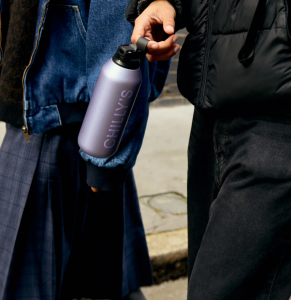
Understanding Skincare Layering
What Is Skincare Layering?
Layering skincare involves applying multiple products in a specific order to maximize their effectiveness. Think of it as a skincare routine where each step builds upon the previous one to create a solid defense against skin issues while ensuring that your skin receives the maximum benefit from each ingredient. Layering allows different products to work together, enhancing their results rather than cancelling them out.
Why Layering Is Important for Your Skin
Effective skincare isn’t just about choosing the right products; it’s about applying them in the right order. Layering ensures that each product penetrates the skin properly and doesn’t interfere with the others. Imagine you’re painting a wall. If you apply one coat and immediately put another on top without allowing the first to dry, you’ll have an uneven finish. The same goes for skincare: if you layer incorrectly, the ingredients won’t work as they should.

The Science Behind Skincare Layering
How Different Skincare Ingredients Work Together
Each skincare product is formulated with specific ingredients designed to target particular skin concerns. For example, serums are typically packed with active ingredients like hyaluronic acid, retinol, or vitamin C, which are great for deep penetration into the skin. When layered properly, these ingredients can work synergistically to address everything from fine lines to dark spots. However, some ingredients may not work well together, like retinol and vitamin C, which is why knowing how and when to layer is crucial.
The Role of pH Balance in Layering
The pH of your skincare products matters because it affects how well your skin absorbs the ingredients. Your skin’s natural pH is around 4.5 to 5.5, and products with too high or low of a pH can disrupt your skin’s barrier, leading to irritation. This is why toners and cleansers are often designed to maintain or restore the skin’s optimal pH. When layering, be mindful of this balance to ensure maximum effectiveness.
Step-by-Step Guide to Layering Your Skincare Products
The Cleanser: Starting with a Fresh Canvas
Your skincare routine starts with a good cleanser. Cleansing removes dirt, excess oils, and makeup, giving your skin a fresh canvas for the rest of your routine. Whether you use a gel, cream, or oil-based cleanser, it’s essential to choose one that suits your skin type to avoid irritation or dryness.
Toner: Balancing and Prepping Your Skin
After cleansing, a toner helps to balance your skin’s pH and prepare it for the next steps. Some toners are designed to hydrate, while others contain exfoliating acids like AHAs or BHAs to slough off dead skin cells. Depending on your skin’s needs, choose a toner that will enhance the absorption of subsequent products.
Serums: Targeting Specific Skin Concerns
Serums are the heart of your skincare routine. Packed with potent active ingredients, serums address specific skin concerns like acne, pigmentation, or fine lines. Apply your serum after toner while your skin is still slightly damp for better absorption. Always layer from the thinnest to thickest product, so serums should come before moisturizers.
Moisturizer: Locking in Hydration
Moisturizers help seal in all the previous layers and provide essential hydration. They come in various textures, from light gels to rich creams, so choosing one that fits your skin type is important. Moisturizers also lock in all the active ingredients you’ve applied, ensuring they have a lasting effect.
Sunscreen: The Final Protective Layer
Finally, sunscreen is your last line of defense against the sun’s harmful UV rays. Even if you’re not heading outside, UV radiation can still penetrate through windows and contribute to premature aging and skin damage. Apply sunscreen as the last step of your routine to ensure protection.

Common Layering Mistakes to Avoid
Overloading with Products
One common mistake in skincare layering is overloading your skin with too many products. While layering allows you to maximize the benefits of each product, using too many can lead to irritation or clogged pores. Stick to the essentials and avoid the temptation to use every product in your collection.
Mixing Incompatible Ingredients
Not all ingredients work well together. For instance, combining vitamin C with retinol can lead to irritation or reduced effectiveness of both ingredients. Always research the products you plan to layer to ensure they’re compatible.
How to Customize Your Skincare Routine Based on Skin Type
Oily Skin: Focusing on Mattifying and Non-Comedogenic Products
If you have oily skin, it’s important to focus on products that help balance oil production without clogging pores. Look for mattifying moisturizers and serums labeled as “non-comedogenic,” which means they won’t cause breakouts.
Dry Skin: Layering for Maximum Hydration
For dry skin, layering is key to locking in moisture. Start with hydrating serums or essences that contain ingredients like hyaluronic acid and glycerin. Follow up with a rich moisturizer and an occlusive product (such as an oil) to lock in all that hydration.
Sensitive Skin: Choosing Gentle Ingredients and Minimizing Irritation
If your skin is sensitive, you need to be extra careful with your layering. Opt for gentle, fragrance-free products and avoid active ingredients like retinol or strong acids. Layer products that focus on hydration and barrier repair to avoid irritation.
Advanced Skincare Layering Tips for Maximum Effectiveness
Incorporating Active Ingredients Like Retinoids and Vitamin C
For advanced users, incorporating actives like retinoids and vitamin C can provide noticeable results. However, these should be used sparingly and at the right time of day to avoid irritation. Retinol, for example, is best applied at night, as it can make your skin more sensitive to sunlight.
Layering at Night vs. Daytime Skincare
Your skin’s needs change depending on the time of day. At night, your skin is in repair mode, so you can use more potent ingredients like retinol or heavy moisturizers. During the day, focus on protecting your skin from UV damage with lightweight serums and sunscreen.
Conclusion
Skincare layering isn’t just about the number of products you apply—it’s about applying them in the right order to maximize their effectiveness. By understanding how each product works, choosing the right ingredients for your skin type, and avoiding common mistakes, you can build a routine that supports your skin’s health and appearance. Whether you’re dealing with acne, aging, or dry skin, mastering the art of skincare layering will help you achieve glowing, healthy skin.





